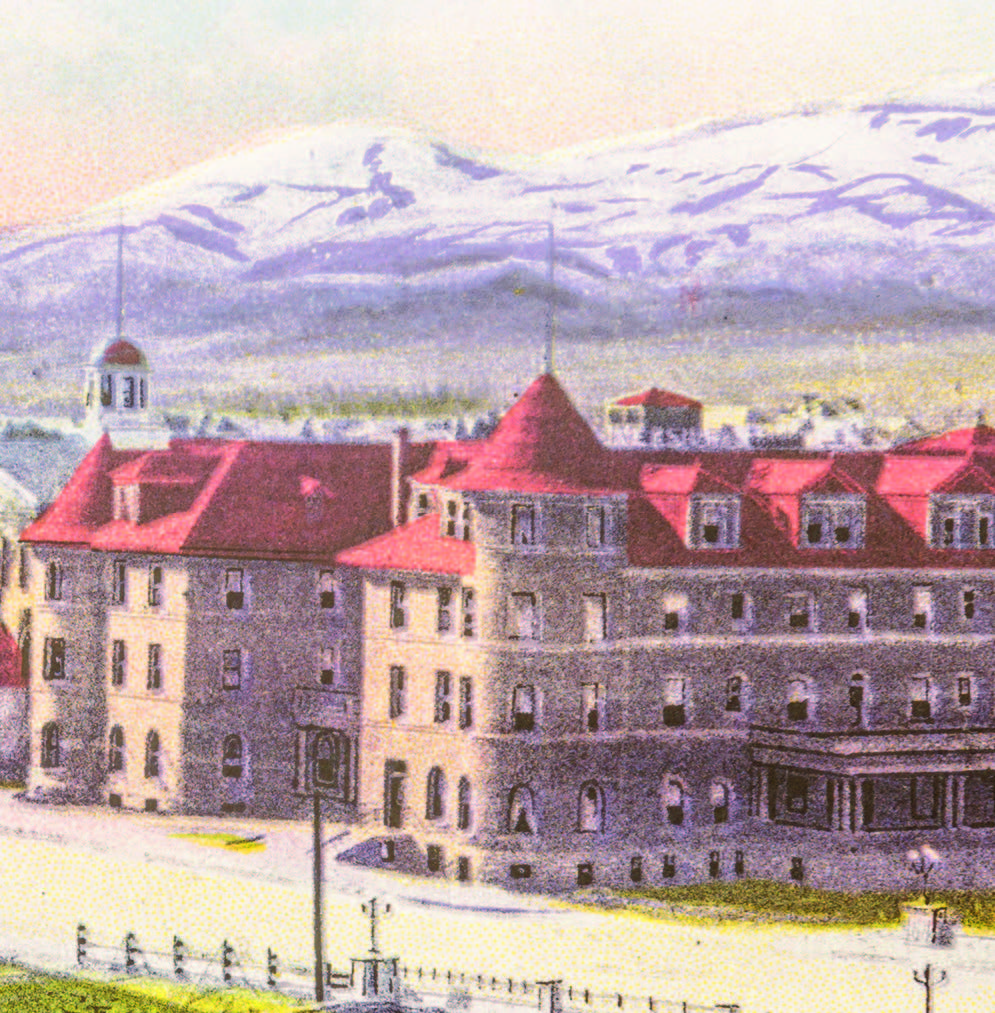The Founding of Reno
May – June 2018
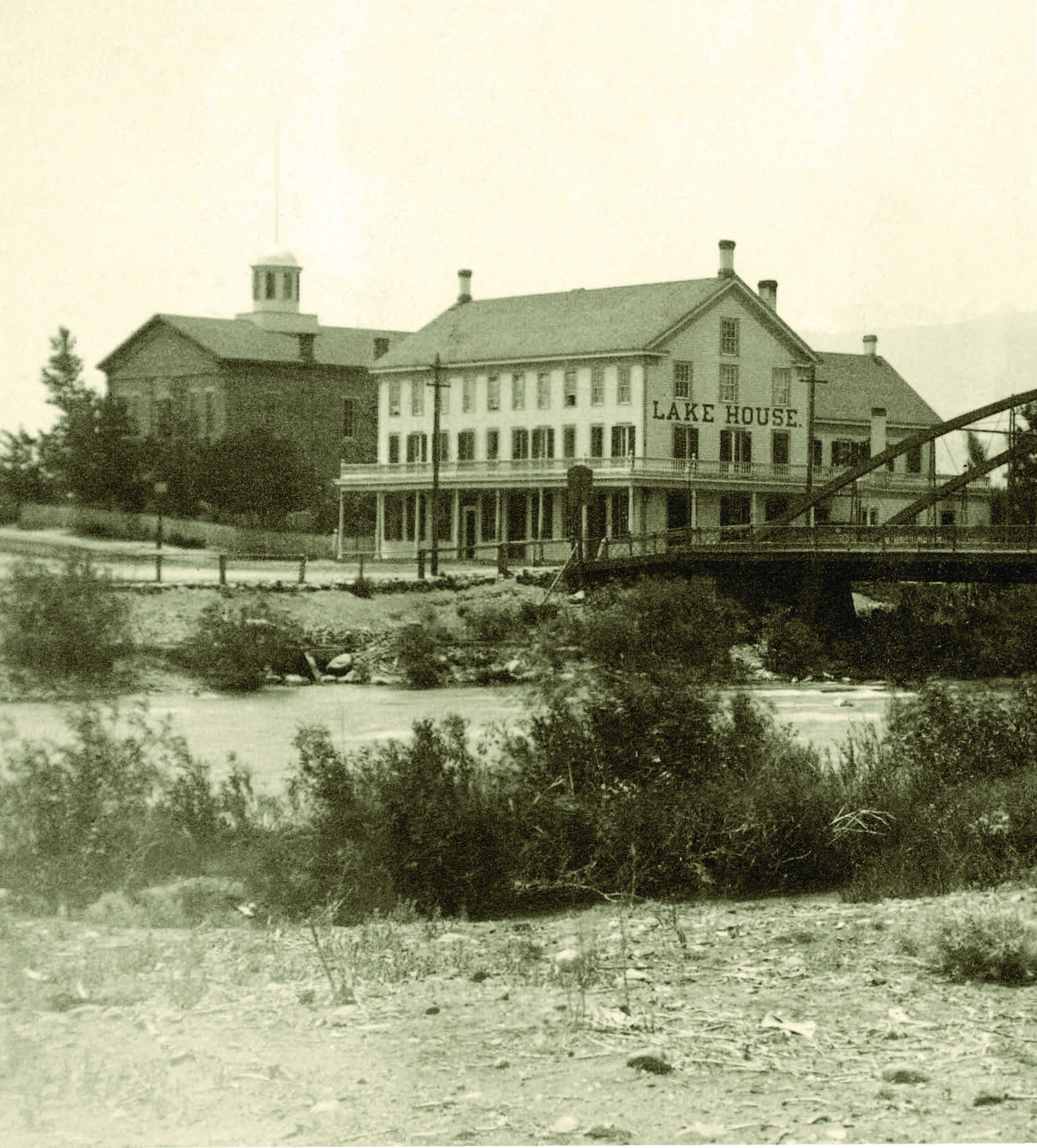
WHO IS THE FOUNDER OF RENO?
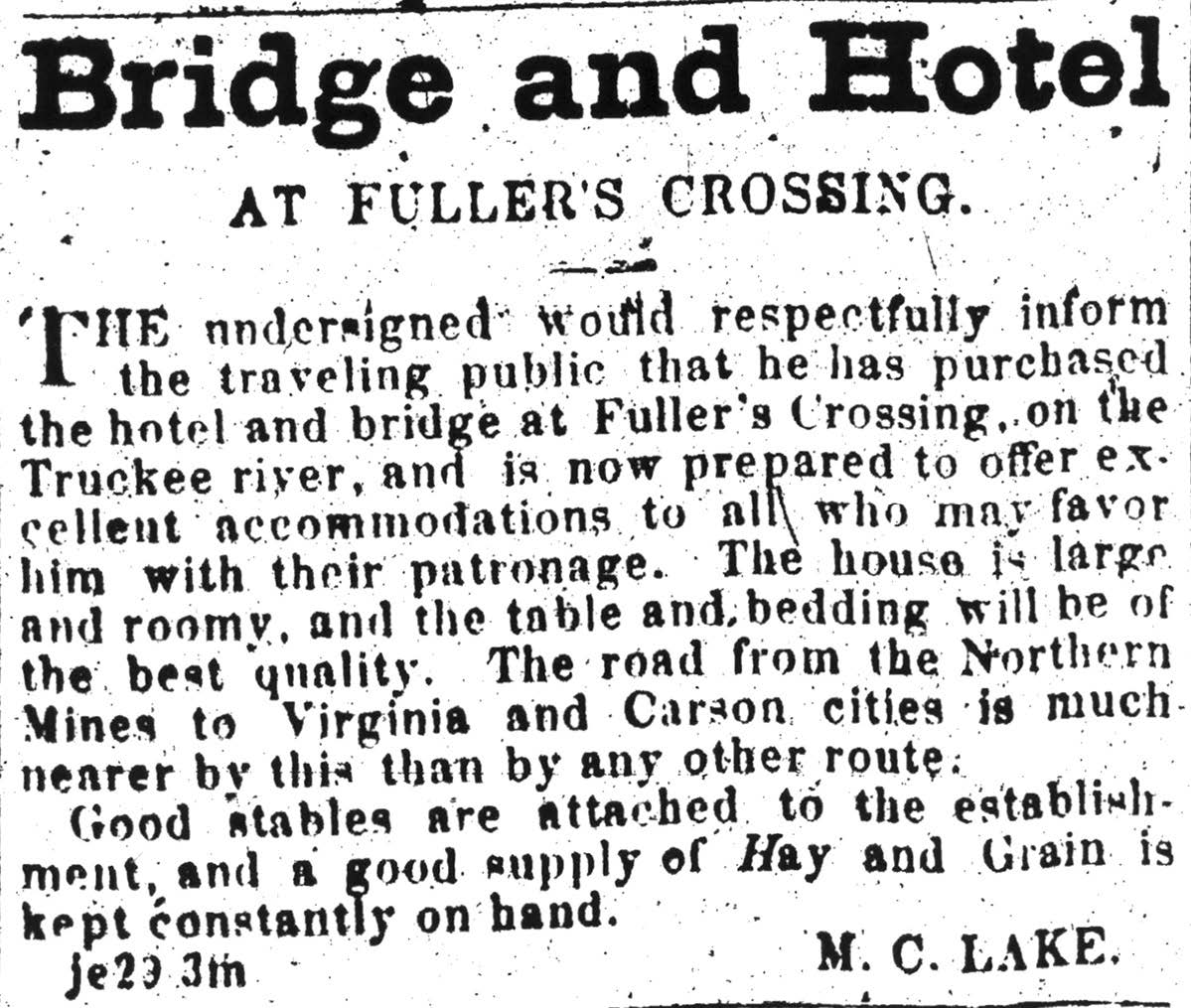
History is evasive on the story of two men and a lucrative spot on the Truckee River.
BY JACK HARPSTER
On May 9, the city of Reno celebrates its sesquicentennial. The area came to life as Lake’s Crossing in 1861, when Myron Lake purchased a wooden bridge, rustic tavern, and an inn along the banks of the Truckee River from Charles William Fuller. Fuller had spent years trying to capitalize on the supply wagons that routinely traversed the Sierra Nevada mountains on their way to Virginia City. But where Fuller had given up, Lake succeeded. He amassed a fortune from his 10-year franchise of the toll bridge across the river, and encouraged a townsite be created on his property, which he then leveraged by giving the Central Pacific Railroad the right of way across his land, and through the newly formed town of Reno in 1868.
For his efforts in the creation of the city and the railway’s access, Lake is credited as the founder of Reno in nearly all the history books. But who was Charles Fuller? Who first came to build an inn and tavern, and construct a toll bridge at a ford on the south side of the Truckee River? Fuller’s Crossing, as it was once known, was established at the site of present day Virginia Street, Reno’s main thoroughfare, but little is known about the man who beat Myron Lake to the site by a few years.
A CIRCUITOUS ROUTE
On Oct. 21 1855, Charles William “Bill” Fuller arrived in San Francisco, ready to make his mark. He headed for Sierra County—a wide swath of mountains and fertile valleys northeast of San Francisco and abutting western Utah Territory. He took a job as a teamster and muleskinner, a man whose chief task was to keep the ornery animals on the move. He later worked in a general store in Pine Grove, which was a booming Gold Rush town.
In 1857, Fuller’s mother, Frances, and his brother, James, arrived in California and purchased a 480-acre ranch near Susanville in the Honey Lake Valley, about 100 miles north of Pine Grove. Bill Fuller, meanwhile, had lost all his money on bad mining investments, so he soon showed up on the family’s doorstep.
OPPORTUNITY KNOCKS
Bill Fuller worked at the family ranch for the next few years, keeping watch on activities in the bordering Utah Territory, specifically a region called Washoe (Nevada became a territory on March 2, 1861). Discovery of silver became public in spring 1859 in Virginia City, just east of Washoe’s Truckee Meadows. Miners, mechanics, laborers, and other get-rich-quick hopefuls poured into Virginia City. Many of these men had rushed to California for gold a decade earlier.
There was one big difference, however. While the Gold Rush denizens had plenty to eat because of California’s agricultural bounty, Comstock Lode hopefuls had no such advantage. Almost all of western Utah Territory—except the sparsely populated Truckee Meadows—was very poor farming and grazing land. Farmers and ranchers in northeastern California found The Comstock a ripe market for their meat and harvest. Frances Fuller’s ranch was one of those Honey Lake Valley Comstock suppliers, so Bill Fuller became quite familiar with the routes from the ranch to Virginia City.
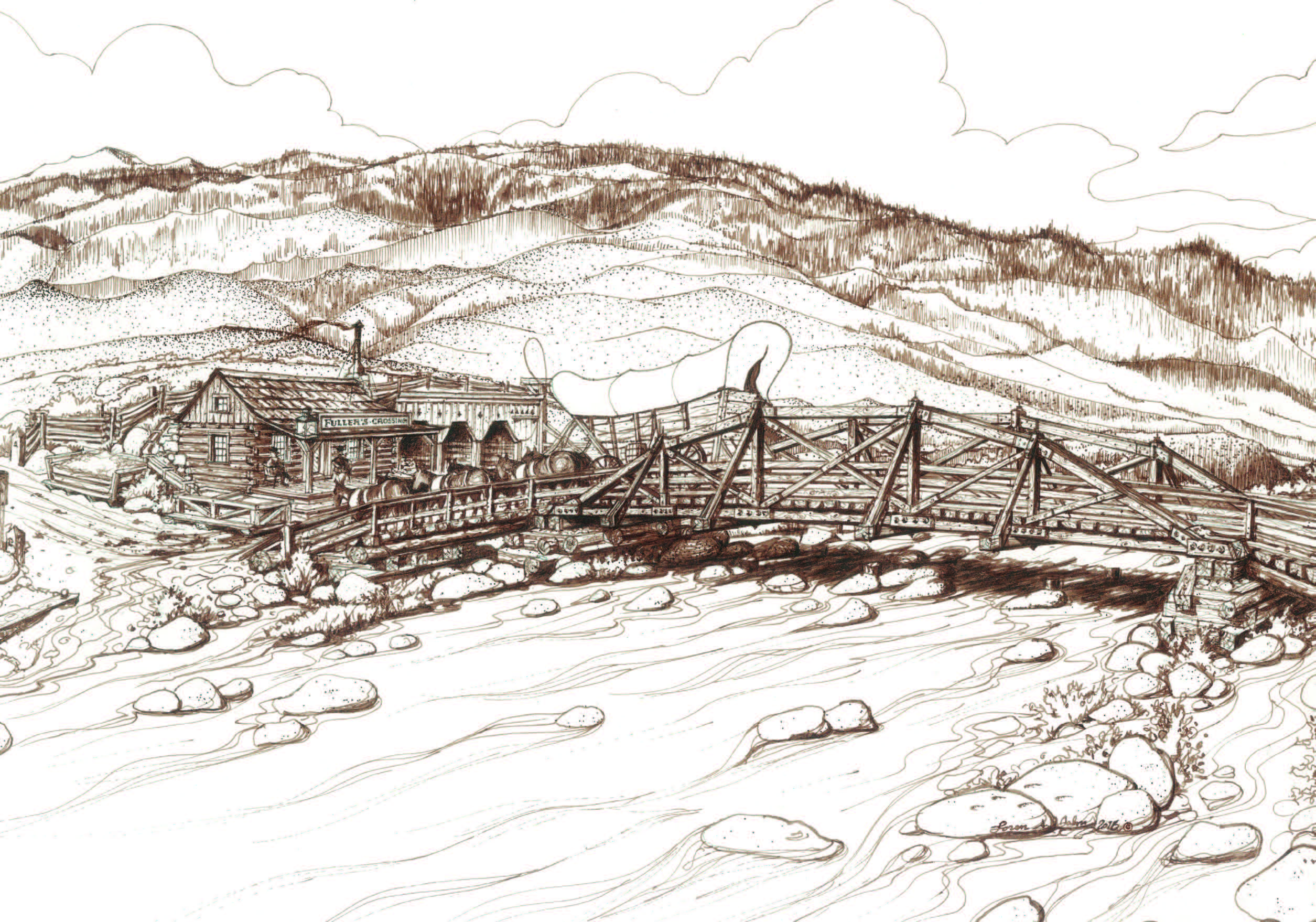
MOVE ‘EM OUT
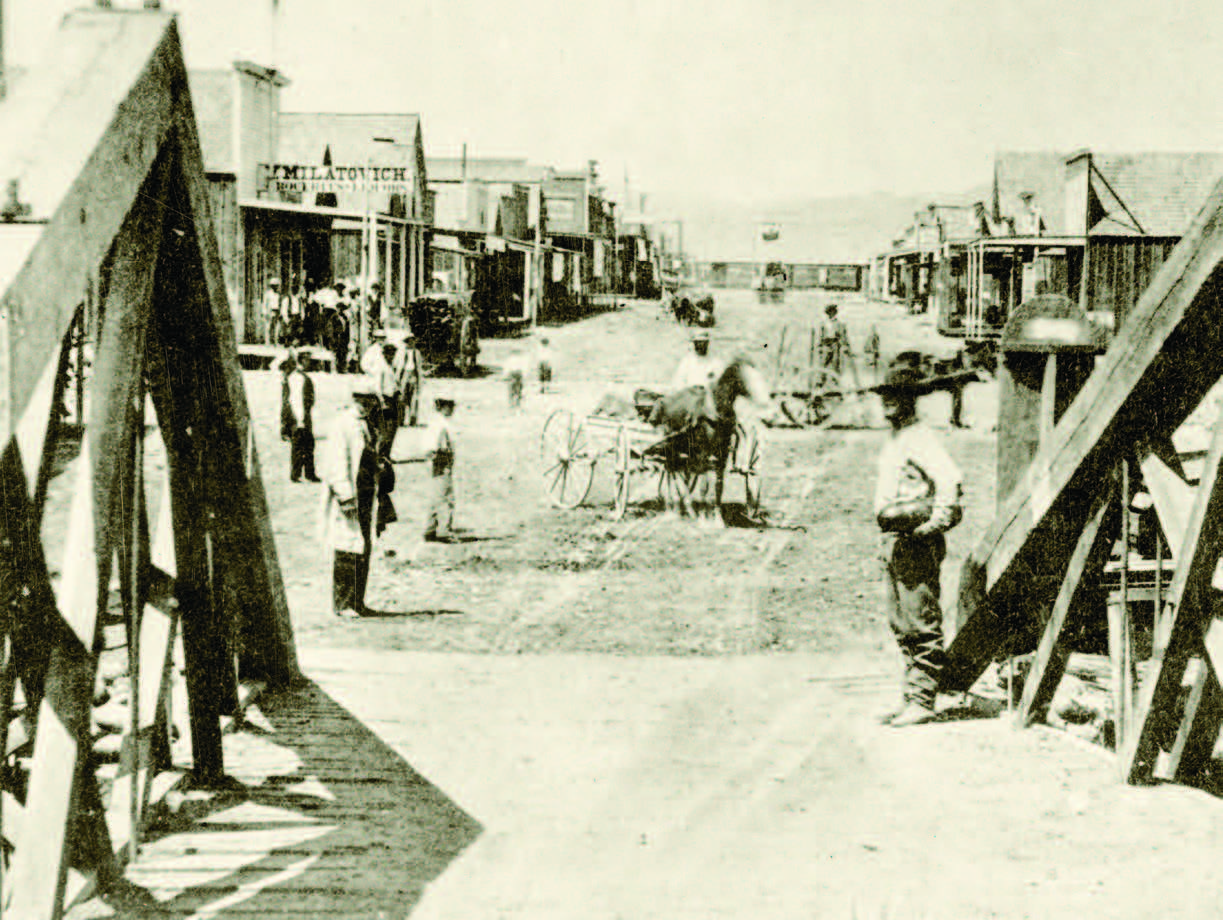
For those seeking to transport goods from California to The Comstock, they found there were few options to safely cross the Truckee River. The river flowed swiftly, and the bottom was covered with huge boulders, making it nearly impossible to drive wagons and herds across. By 1859, two stations had been established along the river, complete with toll bridges, small inns, and taverns. These were O’Neill’s Crossing at today’s Verdi, and a rope-pulled ferry operated at Stone & Gates Crossing in today’s east Sparks. Stone & Gates would add its own toll bridge by the end of 1860, but its location in the Truckee Meadows was in a sink, so for much of the year it was swampy and extremely difficult to traverse. There were other stations on the river as well, but they were further south and/or east and were not convenient for the California-to-Virginia City traffic.
While making the wagon crossings for his mother, the entrepreneurial Bill Fuller sensed an opportunity. In late 1859, he claimed—or squatted on—a piece of unoccupied land on both sides of the Truckee River at an obscure ford about 4 miles west of Stone & Gates Crossing, and began building a crude inn, tavern, and trading post on the south side of the river.
A RIVER RUNS THROUGH IT
The winter of 1859-1860 was brutally harsh, but Fuller finished the hotel and tavern. In February 1860, “The Territorial Enterprise” noted of Fuller that, “His idea is to make a direct route from Dog Valley to [Steamboat] Springs, which in connection with the road to be made by the Truckee Turnpike Company, through Dog Valley, will shorten the distance to Downieville [California] by at least 35 miles.”
By April 1860, he had built a ferry across the river, and installed a line of posts and stringers to pull the ferry across. By that December, Fuller constructed a wood-and-timber bridge across the river for $3,000. On March 5, 1861, he was officially granted a charter for his bridge, tolls were established, and the Utah Territory County Court levied a 10-percent tax on those tolls.
Bill Fuller was now in business as a Truckee River station keeper. His new enterprise immediately began to thrive, becoming the primary river-crossing site for wagon and stagecoach traffic between eastern California and The Comstock.
A SURPRISING SALE

Just 18 months after he launched his enterprise, Fuller would trade it all—hotel, tavern, trading post, and toll bridge— in 1861 to the family’s Honey Lake Valley neighbor, Myron Lake, in exchange for a farm he had purchased from the Fuller family a year earlier. After the trade, Bill Fuller moved back to Honey Lake Valley. He was close to his family again, which may be why he made the deal with Lake.
In 1868—coincidentally the same year Reno was established—Fuller was forced into bankruptcy. In his bankruptcy petition he testified that “[I] engaged in the stock [cattle] business, since which time [I] lost everything by the depreciation in the price of stock and losses in farming.” He would show up in California voter registration records a number of times while living on the farm in the town which had become known as Johnsonville, the latest record in 1875. On May 22, 1877, Fuller sold his farm to A.S. Wright, and that is the last discoverable historical record of Charles William Fuller.
WHO’S ON FIRST?
Myron Lake would go on to achieve fabulous wealth from a 10-year franchise he received on his toll bridge at the renamed Lake’s Crossing and from the surrounding land he purchased a few years later. The town of Reno was established on May 9, 1868, with Myron Lake hailed as Reno’s founder.

Today, Reno’s South Virginia Street, the recently rebuilt Virginia Street bridge, and the Riverside Artists Lofts sit on the site of Bill Fuller’s original inn and tavern, log-and-timber bridge, and a primitive cattle path. Fuller may not have been around when Reno was incorporated in 1868, but there is no question that without his early efforts, Reno may not have come to pass as it did. While historians will continue to debate the question of Lake or Fuller, the Biggest Little City owes its celebration to them both.
